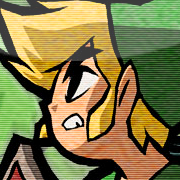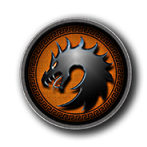Subcategories
-
- 16
- issues
-

- By Phillyman
-
- 20
- issues
-

- By kitsunebi
-
- 125
- issues
-

- By kitsunebi
-
- 7
- issues
-

- By kitsunebi
-
- 171
- issues
-

- By kitsunebi
-
- 17
- issues
-

- By kitsunebi
-
- No issues here yet
-
- 12
- issues
-

- By kitsunebi
-
- 256
- issues
-

- By kitsunebi
-
- 399
- issues
-

- By kitsunebi
-
- 23
- issues
-

- By kitsunebi
-
- 6
- issues
-

- By kitsunebi
-
- 86
- issues
-

- By kitsunebi
-
- 3
- issues
-

- By kitsunebi
-
- 76
- issues
-

- By kitsunebi
-
- 512
- issues
-

- By kitsunebi
-
- 60
- issues
-

- By kitsunebi
-
- 124
- issues
-

- By kitsunebi
-
- 18
- issues
-

- By kitsunebi
-
- 45
- issues
-

- By kitsunebi
-
- No issues here yet
-
- 52
- issues
-

- By kitsunebi
-
- 21
- issues
-

- By kitsunebi
-
- 15
- issues
-

- By kitsunebi
-
- 8
- issues
-

- By kitsunebi
-
- 14
- issues
-

- By Phillyman
-
- 90
- issues
-

- By kitsunebi
-
- 287
- issues
-

- By kitsunebi
-
- 194
- issues
-

- By kitsunebi
-
- 6
- issues
-

- By Phillyman
-
- 4
- issues
-

- By kitsunebi
-
- 95
- issues
-

- By kitsunebi
-
- 59
- issues
-

- By kitsunebi
-
- 74
- issues
-

- By kitsunebi
-
- 13
- issues
-

- By kitsunebi
-
- 40
- issues
-

- By Phillyman
-
- 827
- issues
-

- By kitsunebi
-
- 12
- issues
-

- By Phillyman
-
- 31
- issues
-

- By kitsunebi
-
- 66
- issues
-

- By kitsunebi
-
- 14
- issues
-

- By kitsunebi
-
- 19
- issues
-

- By kitsunebi
-
- 22
- issues
-

- By kitsunebi
-
- 21
- issues
-

- By MigJmz
-
- 114
- issues
-

- By kitsunebi
-
- 16
- issues
-

- By kitsunebi
-
- 98
- issues
-

- By kitsunebi
-
- 107
- issues
-

- By kitsunebi
-
- 36
- issues
-

- By kitsunebi
-
- 37
- issues
-

- By kitsunebi
-
- 1,608
- issues
-

- By kitsunebi
-
- 46
- issues
-

- By RetroDefense
-
- 10
- issues
-

- By kitsunebi
-
- 17
- issues
-

- By kitsunebi
-
- No issues here yet
-
- 2
- issues
-

- By bogusfrank
-
- No issues here yet
-
- 46
- issues
-

- By kitsunebi
-
- No issues here yet
-
- 11
- issues
-

- By kitsunebi
-
- 5
- issues
-

- By kitsunebi
-
- 106
- issues
-

- By kitsunebi
-
- 1
- issue
-

- By kitsunebi
-
- 1
- issue
-

- By kitsunebi
-
- 74
- issues
-

- By kitsunebi
-
- 8
- issues
-

- By kitsunebi
-
- 7
- issues
-

- By kitsunebi
-
- 31
- issues
-

- By kitsunebi
-
- 4
- issues
-

- By kitsunebi
-
- 29
- issues
-

- By kitsunebi
-
- 187
- issues
-

- By kitsunebi
-
- No issues here yet
-
- 379
- issues
-

- By kitsunebi
-
- 19
- issues
-

- By kitsunebi
-
- 1
- issue
-

- By MigJmz
-
- 67
- issues
-

- By Phillyman
-
- 59
- issues
-

- By MigJmz
-
- No issues here yet
-
- 23
- issues
-

- By kitsunebi
-
- 66
- issues
-

- By kitsunebi
-
- 214
- issues
-

- By kitsunebi
-
- 75
- issues
-

- By kitsunebi
-
- 308
- issues
-

- By kitsunebi
-
- 19
- issues
-

- By kitsunebi
-
- 97
- issues
-

- By MigJmz
-
- 37
- issues
-

- By kitsunebi
-
- 68
- issues
-

- By kitsunebi
-
- No issues here yet
-
- 8
- issues
-

- By kitsunebi
-
- 10
- issues
-

- By kitsunebi
-
- 17
- issues
-

- By kitsunebi
-
- 1
- issue
-

- By kitsunebi
-
- 7
- issues
-

- By kitsunebi
-
- 9
- issues
-

- By kitsunebi
-
- 5
- issues
-

- By kitsunebi
-
- No issues here yet
-
- 11
- issues
-

- By kitsunebi
-
- 350
- issues
-

- By kitsunebi
-
- 55
- issues
-

- By kitsunebi
-
- 148
- issues
-

- By kitsunebi
